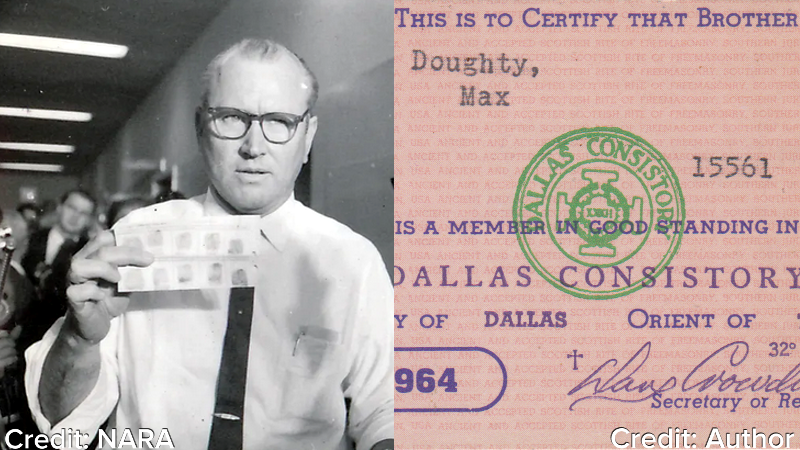
THE MAN SEEN ABOVE, in the black and white photograph, is George “Max” Doughty, talking to reporters on the evening of November 22, 1963. Doughty (1917-1996) was a Captain in the Dallas Police Department (DPD), and in his hands is a DPD fingerprint card, bearing the freshly-inked prints of Lee Harvey Oswald. The other document (in colour, on the right-hand side of the same image) is a very different kind of identification card. I acquired it recently from a private archive. It's a membership card showing that Captain Doughty was a high-ranking Freemason at the time of the assassination.
Captain Doughty, it transpires, was a Master Mason – the highest rank of the three ranks attainable in regular Freemasonry. We can tell this from his card, which states that Doughty was a member of the Scottish Rite. The Scottish Rite is a supplementary course of Masonic study, and only Master Masons are eligible to enrol. The date on the card is January 1964, which proves that Doughty had been raised to the rank of Master Mason long before then.
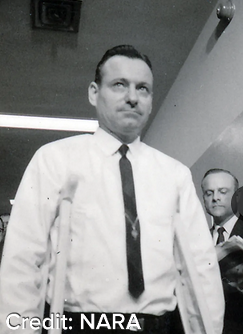
Another Master Mason in the Scottish Rite was DPD detective Paul Bentley (pictured right), who snapped the cuffs on Oswald when he was arrested 80 minutes after the assassination.
For reasons that are unclear, Bentley punched Oswald in the face during the arrest. Bentley was wearing a Scottish Rite masonic ring, and the blow cut Oswald above the eye.
Oswald was later filmed explaining this injury to reporters by saying simply: “A policeman hit me.”

Is this Masonic subtext to the JFK assassination remarkable? Well, yes and no. American history is steeped in Freemasonry, because so many early American Masons hoped to create a more civilized and enlightened society. Some famous instances of American Masonic symbolism, such as can be seen in the street plan of Washington DC, are artistic flourishes by Masonic planners and designers, boldly declaring their philosophy and their optimism. It should come as no surprise, therefore, that Freemasonry still had a significant presence in a city police department of the 1960s. But that observation only applies to Freemasonry as an institution, and totally ignores the conduct of individual Freemasons. The distinction is an important one. The difference between Freemasons and Freemasonry is as fundamental as the difference between automobiles and the highways on which they travel.
One Masonic DPD officer from the 1960s, speaking after his retirement and on condition of anonymity, has stated that: “By hiring a Mason there was no question of his integrity, honesty, or morality and you knew exactly what kind of officer you would get.”
It's not clear how well the public interest was served by this covert recruiting procedure. Throughout the 20th Century, DPD was embroiled in corruption and brutality scandals. In the decade before President Kennedy was murdered, officer misconduct was a simmering constant in Dallas civic life. In 1951, for example, complaints against DPD included the shooting of a handcuffed suspect and beatings of incarcerated inmates. 1953 saw the dismissal of seven DPD officers who were running a for-profit burglary operation, the ringleader being a DPD detective who ended up in prison as a result.
Freemasonry wasn't the only secret fraternity that had infiltrated DPD. In 1924, a police insider compiled a list of 104 DPD officers who were also members of the Ku Klux Klan. In 2017, historian Shaun David Henry discovered that out of 97 traceable names, 20 can be cross-referenced with the rosters of local Masonic Lodges, and nine of those Masons were in positions of police authority. Since the 1924 list indicates that 21 per cent of DPD officers were both Freemasons and Klansmen, the number of DPD Freemasons who weren't Klansmen would have been even higher.
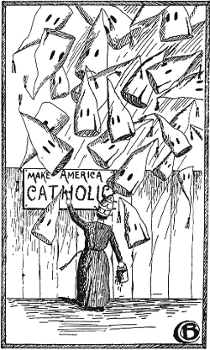
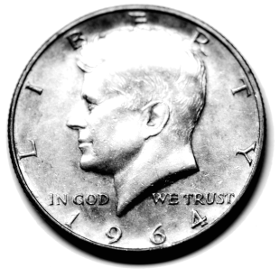
The Vatican had banned Catholics from becoming Freemasons in 1738. The penalty for joining the Freemasons was excommunication, a far more fearsome concept in the 18th Century than it is today. (The Catholic Church's ban on Freemasons was relaxed a little in 1983, and now includes the rather gentler penalty of not receiving Holy Communion.) So in DPD, you found two converging streams of covert anti-Catholic activism. US President John F. Kennedy was, of course, a practising Roman Catholic.
The thing about the DPD Klansmen is that they didn't magically disappear when the Ku Klux Klan was formally wound down in 1944. Those above a certain age remained in post, and when the Second World War concluded in 1945, those postholders were reunited with younger DPD officers returning from their enlisted service. They no longer had membership cards, but the Klan was back in town. That the KKK had only gone underground in 1944 is amply illustrated by the nationwide materialization of local and informal KKK chapters that occurred throughout the 1950s and 1960s, as American apartheid was gradually dismantled.
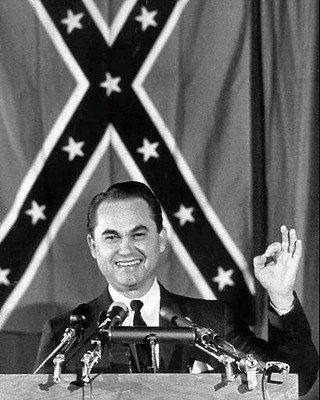
One particularly interesting sign of the Klan's post-war resurgence is the conduct of Alabama Governor George Wallace (pictured right). Wallace (1918-1998) was a Dixiecrat, one of the South's Democrats who had never conceded the Civil War, let alone embraced Reconstruction. Wallace was a true white supremacist, when that phrase denoted a serious force in politics. He was also a high-ranking Freemason.
Early in his political career, Wallace had spoken out against the Ku Klux Klan. By the late 1950s he was starting to adopt a lot of Klan ideas, which he found were well-received by many white Alabamans. Wallace's infamous inaugural declaration of January 1963—“Segregation now. Segregation tomorrow. Segregation forever!”—deliberately echoed the slogan printed on the cover of The ABC of the Invisible Empire, a massively-circulated Klan recruitment pamphlet from the 1920s (detail pictured, below left).
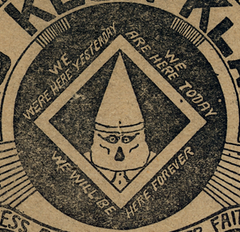
Less than a week before Kennedy's scheduled trip in Dallas in November 1963, Wallace visited the city to announce his intention to run against Kennedy in the 1964 Democratic Party primaries. One way or another, the white supremacists of the Old South wanted JFK gone for good. How Wallace's announcement of his intention to run for the presidency was received by the Freemasons and disbanded Klansmen of Texas, and particularly those in the Dallas Police Department, we can easily imagine. They would already have known Kennedy's own attitudes toward the Klan and the Masons.
In a 1961 address to a meeting of the American Newspaper Publishers Association, Kennedy had said:
“The very word "secrecy" is repugnant in a free and open society; and we are as a people inherently and historically opposed to secret societies, to secret oaths and to secret proceedings.”
Kennedy's intention was to draw a distinction between open cultures, such as the USA, and closed ones, meaning the Soviet Union. He was wrong to use that example, though, because if American history demonstrates anything, it is the power and popularity of secret societies, secret oaths, and secret proceedings. The Freemasons and the Ku Klux Klan would understandably have construed Kennedy's 1961 remarks as a threat. The unanswered question is whether and how they reacted.
Perhaps it was only an ironic coincidence that Dealey Plaza, where Kennedy was shot to death, was named after a prominent Dallas Freemason, and had been the site of the first Masonic Lodge founded in Dallas.
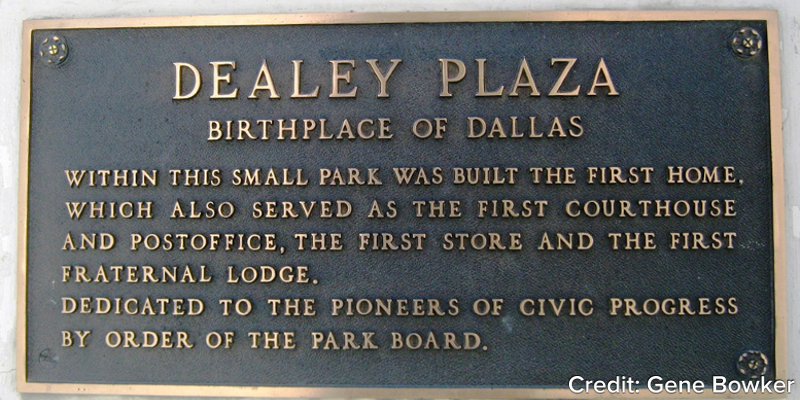
If Freemasonry is a secret society/fraternity, then how come their lodges are clearly marked?
Because the existence of Freemasonry itself isn't a secret.
Congratulations @garrickalder! You have completed the following achievement on the Hive blockchain and have been rewarded with new badge(s) :
Your next target is to reach 100 replies.
You can view your badges on your board and compare yourself to others in the Ranking
If you no longer want to receive notifications, reply to this comment with the word
STOPCheck out the last post from @hivebuzz: